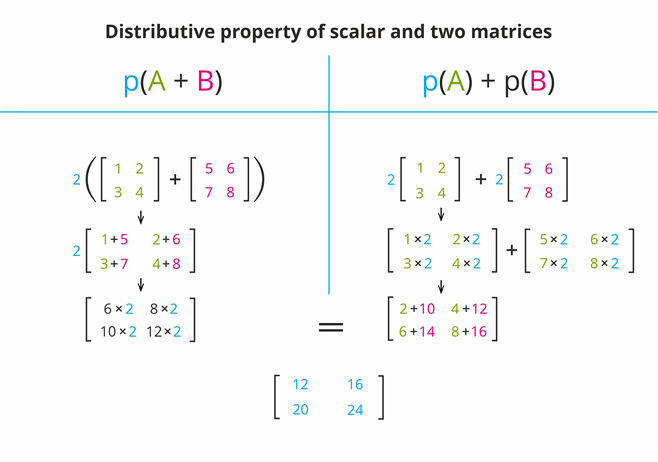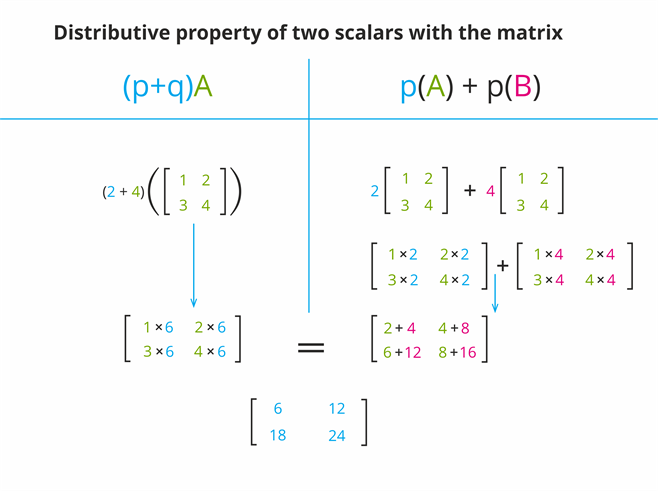PDF chapter test TRY NOW
Distributive property:
1. Distributive property of scalar and two matrices - p(A+B) = pA+ pB
Let A, and B be m×n matrices and p and q be two non-zero scalars (numbers).
Example:
Consider the matrices A = \begin{bmatrix} 1 & 2 \\ 3 & 4 \end{bmatrix}, B = \begin{bmatrix} 5 & 6\\ 7 & 8 \end{bmatrix} and p = 2 then verify p(A+B) = pA+ pB.
Solution:

2. Distributive property of two scalars with a matrix - (p +q)A = pA +qA
Example:
Let's take the same matrices to prove A = \begin{bmatrix} 1 & 2 \\ 3 & 4 \end{bmatrix} to prove (p +q)A = pA +qA. Where p = 2 , and q = 4.
Solution:

